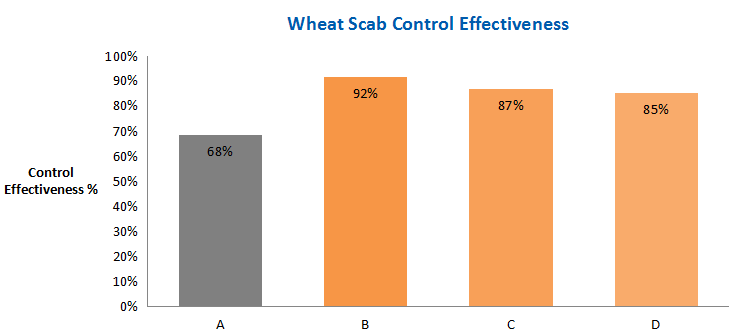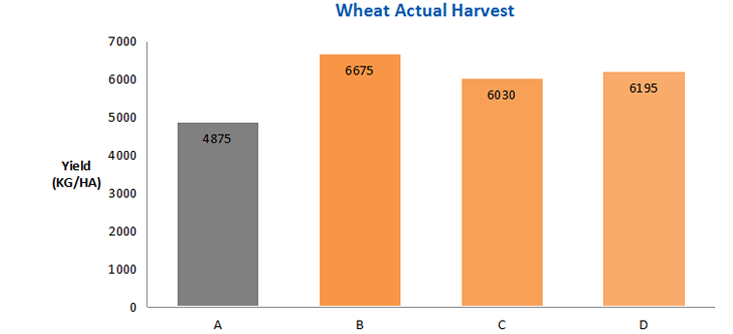Case Studies
We provide plant protection and plant nutrition products that help build healthy and sustainable food systems.
Disease Control in Wheat Scab
Wheat Scab is a worldwide disease, known as the "cancer" of wheat. Once infected, it could sharply reduce grain yield and quality, and cause serious economic losses to growers.
Fungicide
Wheat Scab is a worldwide disease, known as the "cancer" of wheat, which mainly occurs in the process of wheat planting and cultivation. The disease is widely distributed in cold and humid regions. Once infected, it could sharply reduce grain yield and quality, and cause serious economic losses to growers.
The incidence and severity of wheat Scab is mainly connected to the rain. If the rainfall encounters more than three days, the humidity in the wheat field rises, which provides favorable conditions for the occurrence of Wheat Scab.
The disease can take place at all stages of wheat growth, and the infection is usually more serious from the flowering stage to the grain-filling stage and eventually causes serious damage including partial or complete rot of wheat.
Wheat Scab is mainly controlled by chemical application, which is usually divided into two stages. The first stage is carried out from full heading to the flowering stage of wheat. The second stage is followed up from 7-10 days after the first stage. To get better prevention results, make sure to spray thoroughly and evenly during the two critical stage periods.
Sunjoy Recommendations
Sunjoy launched the product Synglo (Pyraclostrobin 160g/L + Tebuconazole 320g/L SC) in 2018. The product offers growers reliable control for many important fungal diseases. Synglo has preventative, protective, and curative properties. It combines two unrelated modes of action together, providing effectiveness under conditions of fungicide resistance. Besides wheat scab, Synglo is also registered for use on Apple leaf spots and Citrus melanose.
Synglo can be applied as a foliar or aerial spray and is tank-mixing safe with other crop protection products. However, always consult the product label and expert for detailed instructions and precautions.
|
Synglo at a glance |
|
|
Chemistry |
Pyraclostrobin: Strobilurin fungicide (FRAC Group11 ) Tebuconazole: Triazole fungicide (FRAC Group 3) |
|
Function |
Pyraclostrobin: inhibit mitochondrial respiration Tebuconazole: inhibit gibberelin biosynthesis |
| A.I. |
Pyraclostrobin……………………………160g/L Tebuconazole…………………………….320g/L |
|
Formulation |
Suspension concentration (SC) |
Performance Results
1. Test purpose
The purpose of this study is to understand the application rate in field and verify the control effect of Pyraclostrobin 160g/L + Tebuconazole 320g/L SC on wheat scab.
2. Fungicide and Experiment
|
No. |
Fungicide |
1ST Application (mL/HA) |
2nd Application (mL/HA) |
|
A |
Untreated Check |
N/A |
N/A |
|
B |
48% Pyraclostrobin+Tebuconazole SC |
60 |
60 |
|
C |
25% Phenamacril SC |
100 |
100 |
|
D |
40% Prochloraz+Tebuconazole EW |
50 |
50 |
3. Application
The test field is located in Huai’an City, Jiangsu Province. The test variety is Huai Wheat No. 33, which is vulnerable to wheat scab. The first application was on 04/28/2022, which is at the early stage of flowering. The second application was on 05/05/2022, which is one week after the first application.
4. Evaluation


5. Conclusion
Synglo (48% Pyraclostrobin+Tebuconazole SC) not only controls wheat scab but also improves grain weight and increases the actual yield.
Previous
Explore More

